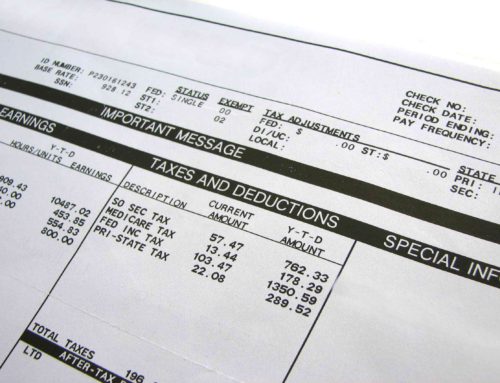Do any of these phrases ring a bell? “Watch your money grow”. “My money makes money”. “The magic of compound interest.” “Exponential growth!”. You may have heard some iteration of these types of statements, implying that somehow your dollars and cents are hooking up to make little baby bucks. It doesn’t exactly happen like that, but compound interest is very real and can have a significant impact on your net worth. Let’s talk about what it is, how it works and why it’s such a critical concept to understand along your wealth building journey.
“Compound interest is the 8th wonder of the world. He who understands it, earns it. He who doesn’t, pays it.”
– Albert Einstein (fairly smart guy)
What is Compound Interest?
Well, let’s start with interest itself. That term’s thrown around, but have you ever stopped to think about what this is. Interest is essentially a fee that’s paid to someone (or to a company) for letting them borrow money. That fee is a function of how much money is borrowed. The more money borrowed, the higher the fee. Take a savings account, for instance. When you put money in a savings account, it doesn’t just sit in a vault, Scrooge McDuck style. The banks take that money and loan it to other people or businesses and they charge those borrowers interest on the loan. When the borrowers pay the money back, with interest, the bank takes their cut off the top and then comes back to you and says, “Hey here’s a little something to say thanks for putting your money in our bank.” When you put money in a savings account, you are effectively loaning money to the bank and charging them interest.
Simple interest is typically marketed as an APR or annual percentage rate. This is how much interest is being paid or charged, depending on whether you’re the borrower or the lender. Let’s say you have $1000 in a savings account and the bank pays you a 1% APR (which is really good as of the time of this writing). Using simple interest, at the end of 1 year, you would have $1010. However, it’s not that simple because when it comes to credit cards, banks, and investments, interest compounds, meaning the interest isn’t applied to just once to the principal (original amount). It’s applied to the new amount…so interest on top of interest.
It works similarly for stock investments. The differences being 1) the returns on stock investments can be much higher than a savings account, but 2) stock returns aren’t guaranteed. So there’s some risk/reward to consider, but let’s say you own 10 shares of a stock worth $100 per share, giving you $1000 invested. Using simple interest, if that stock returned 10% per year, at the end of one year, your shares would be worth $1100 dollars…the $1000 you invested plus $100 in interest. Then the next year, that stock earns another 10%. This would be 10% of $1100 now. The stock price will fluctuate and the returns will not be consistent year over year, but historically, the stock market has shown an average return of ~10% (not accounting for inflation). Each interest earning will compound on top of the previous earning.
How Does Compound Interest Work?
I’m about to nerd out with some math here so if you don’t like math or don’t really care how it works, keep reading anyway because this is important stuff. The compound interest formula looks like this:

To calculate compound interest, you need the principal or the initial amount, the interest rate, the total time period and the number of times the interest is applied for each time period. Note that the time and interest application are multiplied and raised to that power. This is the exponential piece that creates that hockey stick growth (because the graph is shaped like a hockey stick). If you were to start with a $10,000 investment and put that into an example sentence, it would read like this: You have $10,000 invested at a 7% rate compounded annually over 20 years.
Before I say how much that ends up being, for comparison, let’s look at that same $10,000 invested using a simple interest formula at the same 7% rate for the same 20 years.
A = P(1 + rt) = 10,000 * (1 + 1.07 * 20)
Using simple interest, you would end up with $24,000, more than doubling your money. Not bad, right? But with daily compound interest over the same time period, you would end up with $40,546.56…quadrupling your money!
A = P(1 + r/n) ^ nt = 10,000 * (1 + 1.07/365) ^ 365 * 20

Compound interest earns over $16,500 more than simple interest over that same time period! That’s the magic part. This is where your money is literally earning money, working for you. If you assume a 10% rate over 30 years, you can really start to see that hockey stick curve.

In these simulations, I only used the one initial deposit. Now imagine if you were making additional contributions each year. Actually, you don’t have to imagine. Here’s a calculator that does it for you. When you combine regular contributions with compounding interest, you’re well on your way to financial independence!
How To Earn Compound Interest
Hopefully, you’re loving this concept and wondering how to get in on this action. The good news is, you’re probably already doing it. If you have a savings account, you’re very likely earning compound interest on that. Other ways to get involved are by investing in CD’s (certificates of deposit), treasury bills and notes, and money markets are a few examples. These methods guarantee a return, though that return will be relatively low (~ 1% at the time of this writing). If your risk tolerance is higher, you have the opportunity to yield higher returns by investing in stocks, bonds, mutual funds and index funds. A long term hold in an index fund can yield a 7-10% return. A hot stock can yield much higher returns. For instance, if you were smart lucky enough to be holding Tesla stock at the beginning of 2020, by Fall 2020, you’d have seen more than a 400% return 😮.
CAUTION: Let me re-re-reiterate that stock market returns are not guaranteed and increases like Tesla’s are very unlikely. It’s impossible to time the market. There are professionals that study the market all day every day and they still get it wrong about 80% of the time. My approach to investing in the market is to park the vast majority of my money in long term holds in broad based, low cost index funds. Again, there’s no such thing as a guarantee in the market, but statistically I like my chances.
CAUTION #2: Compound interest works both ways. So far, I’ve talked about earning compound interest and how awesome that is, but compounding interest can also be the enemy. Credit card companies use compound interest, meaning that if you hold a balance from month to month, the interest they charge you is compounded on top of the previous month’s interest charge. Just like I talked about how compound interest can help your money grow, the same math can cause your debt to grow so be mindful of that. If you’re struggling with credit card debt, check out my free debt demolition guide on the homepage and also check out my free Debt Tracker Tool on the Resources page.
Next Steps
Now that you know all about compound interest, here’s some homework to help put this newfound knowledge to work.
I’ll leave you with a quote from famous investor and multi-billionaire, Warren Buffet:
“My wealth has come from a combination of living in America, some lucky genes, and compound interest.”
– Warren Buffett (fairly rich guy)








Great Information explanation easy to follow.
Thank you! There’s plenty more coming. Please keep reading and sharing.